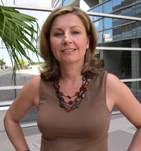Like a Volcano
Suddenly a cold, clammy wave rushed over her as extreme heartburn welled in her chest

On New Year’s Day 2005, all Bonnie Stuart could think about was turning 50. “How can I be a 50-year-old woman?” she asked herself often though her birthday would not come until the fall.
On Tuesday March 22, 2005, Bonnie sipped a glass of wine as she and her girlfriends perused the menu. Suddenly a cold, clammy wave rushed over her as extreme heartburn welled in her chest. “What did I eat for lunch?” she wondered. “Maybe it’s a hot flash,” she thought as she drank cool water trying to cool off. The pressure only intensified in her chest; she did not feel well.
Bonnie’s friend drove her to the nearest hospital. “Where do I sign in, I’m having chest pains?” she asked. Immediately the nurse connected her to an EKG, oxygen and put her on nitroglycerin. “I had a few good burps and I felt better,” she explained. An electrocardiogram (ECG) revealed she was not having a heart attack. “I left there mortified. It was just gas!”
Her husband, Dave, however insisted she see a cardiologist. The following day, she met with cardiologist Barry Weinstock, MD. Bonnie had no risk factors for heart disease. She exercised three times a week, did not smoke, had low blood pressure, had no family history and had only moderate cholesterol that she monitored through a prescription. “I do not think you had a heart attack,” Dr. Weinstock explained. He ordered several tests to confirm. The following day, Thursday, Bonnie had an echocardiogram or ultrasound of her heart, a nuclear scan to monitor the blood flow though her heart and a stress test. All the tests came back indicating a normal healthy heart. Her doctor also ordered a CT scan to get a detailed picture of heart.
The day before the CT scan, Bonnie picked up a late lunch. She was sitting in the kitchen eating while her husband worked from his home office, when the same heartburn feeling overwhelmed her again. “It felt like a volcano was erupting in my chest,” she describes. “It was not like what I had seen in the movies. My arm didn’t ache,” she continues. “I can only describe it by saying that it just felt like my body was shutting down.”
Bonnie walked down the hall clutching her chest and told her husband she needed to get to the hospital. During the three-quarters of a mile to the entrance of their neighborhood, Dave noticed his wife fading quickly. He pulled into the fire station directly across the street where they hooked her to an EKG and started her on nitroglycerin. The ECG registered that she might be having a heart attack. An ambulance transported her to nearby Orlando Regional South Seminole Hospital. Then Dr. Weinstock ordered her flown to Orlando Regional Medical Center. “I’m afraid of helicopters, just take me in the ambulance,” she tried to bargain, but time was of the essence.
When the Air Care Team arrived, they gave her some morphine to help her relax on the flight. Strapped to a gurney with a large oxygen mask across her face and a helmet on her head Bonnie felt alone. “I felt like I was in a coffin,” she remembers. “Tell me what’s happened,” she asked. The Air Care Team told her that the EKG now showed she was having a heart attack.
“I’m not going to make it to my birthday,” she thought. “The newspaper is going to read, ‘She died having never reaching 50,’” she imagined, increasing her anxiety even more. God, please don’t take me now. My daughter needs her mother. She continued to pray, Our Father…Bonnie began to calm down. “It only took six minutes to get there, but that was the most frightened I have ever been in my life,” she says.
Upon landing, Bonnie was immediately taken to the ORMC Cath Lab. “I’m Brad. I’m Nate. I’m Tim,” she heard as introductions rang out from around the room. “Introducing themselves helped me to feel at ease in an uncomfortable situation,” she shares. Each step in the process, they informed her of what they were doing which helped her to relax. “They were so friendly, kind and reassuring.” Dr. Weinstock met Bonnie in the ORMC Cath Lab. He performed an angioplasty to reopen the blocked left anterior descending (LAD) artery and inserted two stents to reinforce the artery that blocked the lower front side of her heart.
Bonnie recuperated in Critical Care Unit for several days where she felt like her family was caring for her. “My nurses wrote their names on a board in my room. Using our names felt so personal and helped me not feel alone.” Only a few days later, Bonnie returned home. “The entire experience, though traumatic, was made easier by all of the kindness and compassion shown to me by everyone along the way.”
Having a heart attack changed Bonnie’s outlook on life. “I enjoy every day more, savoring even the little things in life,” she says. “The staff at ORMC holds a very special place in my healing heart!” she concludes. To celebrate her once-dreaded fiftieth birthday, Bonnie and her close friends took a trip to Boston. “It was my best birthday.” Now, she says, “Keep them coming.”






